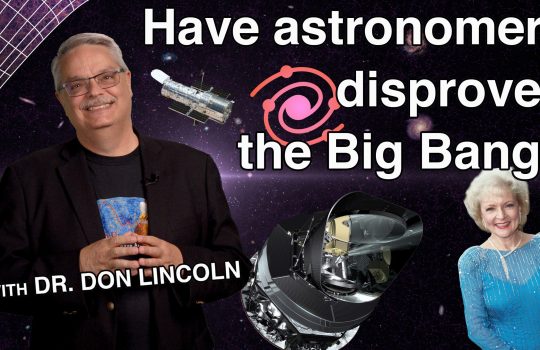Have astronomers disproved the Big Bang?
The theory of the Big Bang describes the biggest event of all time — the origin of the universe itself. Scientists are confident that this theory accurately describes the life story of the universe over its 14-billion-year history. However, scientists like to check and recheck their work, and they have found a discrepancy in two measurements of how fast the universe is expanding. This discrepancy could mean the need to add another twist in the story, or it could disappear with more study. In this video, Fermilab scientist Don Lincoln helps us sort it all out.


